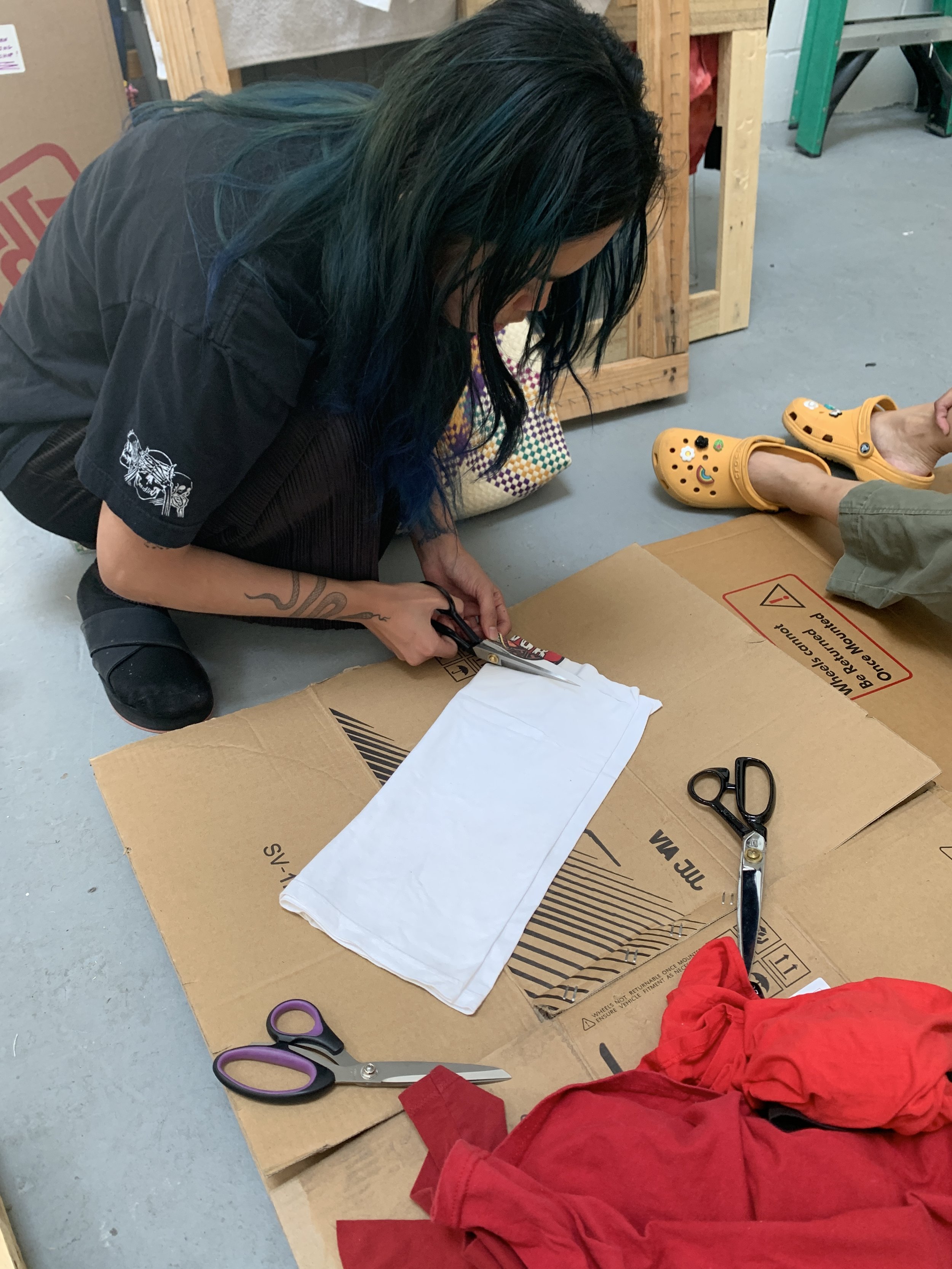
Basahan is a woven household staple in the Philippines that you might see as a doormat, rug, or potholder. These weaves are handmade with a DIY loom using retaso, or scrap fabric, from secondhand clothing or textile waste that often comes from sewing factories or dumpsites. In addition to basahan functioning as a strategy to manage textile waste, many working class Filipinos make and sell basahan as a form of income to support their families.
The fabric scraps woven in our basahan were sourced from ‘From Here to Wear,’ a monthly community event for swapping and mending clothing in Toronto. Maria Patricia Abuel and I assisted Norwin Anne with creating basahan and wooden looms, which were used by youth femme and non-binary Filipinx artists in a Toronto-based KAMI Kapisanan workshop.
Textile ingenuity in the Global South deserves recognition, especially considering the regular practice of Western countries like the US and Canada exporting overwhelming amounts of bales filled with secondhand clothing and textile waste to countries such as Ghana, Pakistan, Kenya, Guatemala, and more. In the Philippines, there are many creatives engaging with basahan and retaso as part of their artistic practices, like Tekla Tamoria, Kris Ardena, RIOtaso, and Tropik Beatnik. There are also social enterprises like Rags2Riches that partner with weaving artisans in communities across Metro Manila, who craft pieces from upcycled, overstock fabrics and local textiles.





